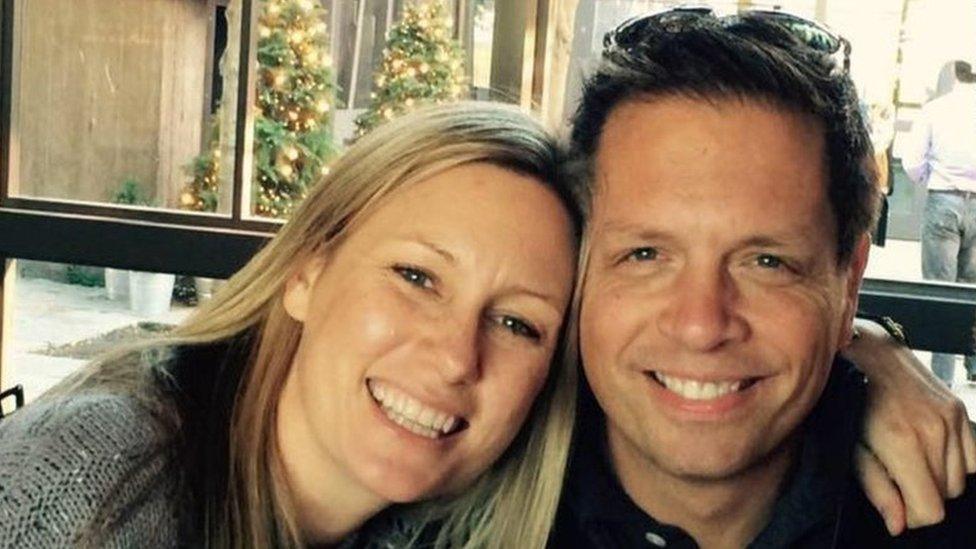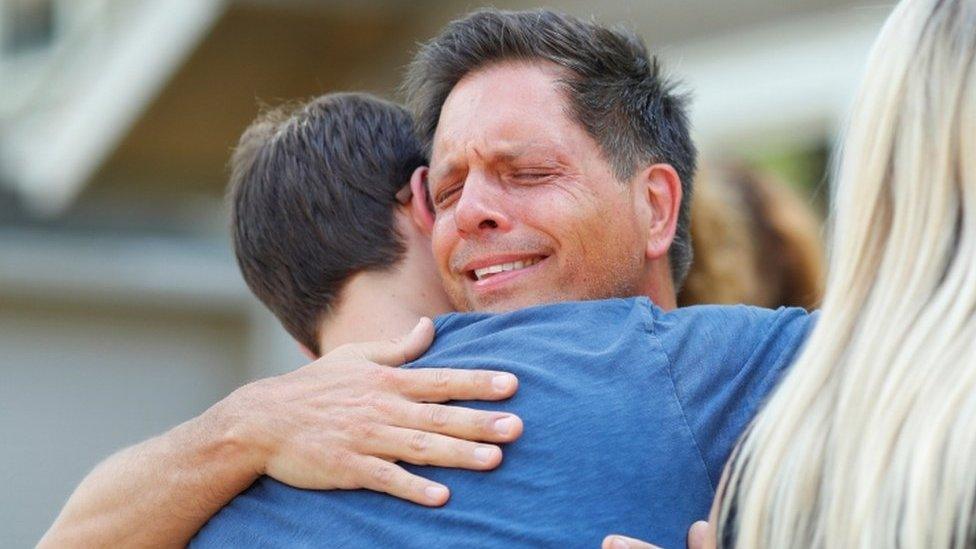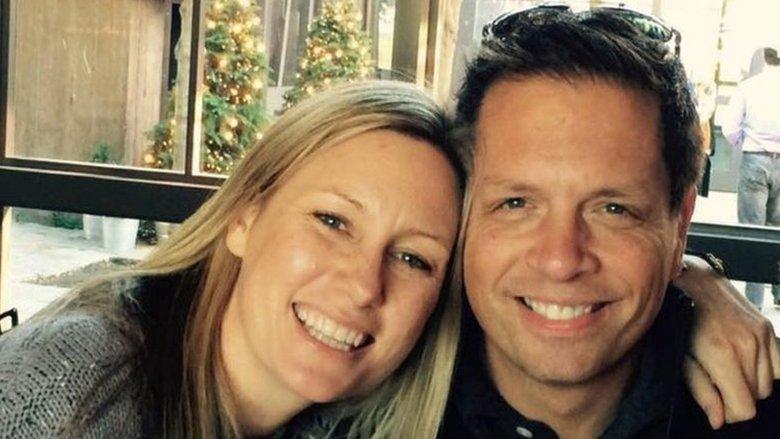Justine Damond: Australia waits for answers in 'American nightmare'
- Published
Justine Damond's family held a silent dawn vigil on Sydney's Freshwater Beach
Many Australians were just arriving at work on Monday when the confusing first reports emerged that a Sydney woman had been fatally shot in Minneapolis.
Days later, as the week drew to a close, Justine Damond's killing was still dominating the news in her home country - and there were only more questions.
How had the former veterinarian from Sydney's northern beaches been shot by a policeman after simply trying to report a potential crime?
It was branded an "American nightmare" in consecutive front page headlines in Sydney's Daily Telegraph, external newspaper.
Writing in the Sydney Morning Herald, columnist Paul McGeough lamented that Minneapolis authorities were "not joining the dots" over how Officer Mohamed Noor had come to fire his weapon.

"Damond can't tell us what happened in a darkened alley - because she died, after taking a bullet in the abdomen," he wrote, external.
"And the man who seemingly admits to pulling the trigger is refusing to be interviewed - that's his constitutional right, we're told."
Close to home
For many Australians, the controversy surrounding police shootings in the US is a familiar topic - it often features in the news.
But the shooting of a local woman as she sought assistance in her pyjamas brings home an extra emotional reality, according to Dr David Smith, a US studies expert at the University of Sydney.
"Australians are well aware that police shootings happen in the United States and that a large amount of people die," he said.
"[However] it's very unusual that an Australian would be involved."
Police shootings in Australia are relatively rare. According to an Australian Institute of Criminology study, external, 105 people were shot dead by police in Australia between 1989 and 2011.
In comparison, Ms Damond was the 541st victim of a police shooting in the US in 2017 alone, according to the Washington Post, external.
Shootings in general are significantly lower in Australia, and debate over gun ownership is not as polarising. In 1996, then-Prime Minister John Howard, a conservative, successfully banned automatic and semi-automatic weapons after a shooting in Tasmania that killed 35 people.

Many in Australia have been shocked by the killing of Justine Damond
Dr Smith believes that Australians have long been familiar with these differences.
"I think that is very shocking to have an Australian involved in this [incident], but I doubt that this changes the way that Australians see the US because we are aware of these issues," he said.
Outpouring of grief
Beneath a rising sun on Wednesday, relatives and friends of Ms Damond gathered in silence for a vigil at Freshwater Beach in Sydney.
It was not far from where Justine Ruszczyk, as she is also known, had lived before moving to the US to be with her fiance, Don Damond. She had gone to high school in a neighbouring suburb.
The group of about 300 people lit candles before a gong sounded and one of her friends began playing a didgeridoo.
Attendees - including her father, John Ruszczyk, and brother, Jason - released pink flowers into the sea.
The same day, Australian Prime Minister Malcolm described the yoga instructor's killing as shocking and inexplicable.
Australian Prime Minister Malcolm Turnbull: 'We're seeking answers'
He told a national television programme that he was "demanding answers".
Two days later, Minneapolis Police Chief Janee Harteau held a press briefing and acknowledged that the shooting should not have happened.
"I want to assure Justine's family, our community and those in Australia that I will do everything in my power to ensure due process is followed and justice is served," she said.
- Published19 July 2017

- Published18 July 2017

- Published17 July 2017
